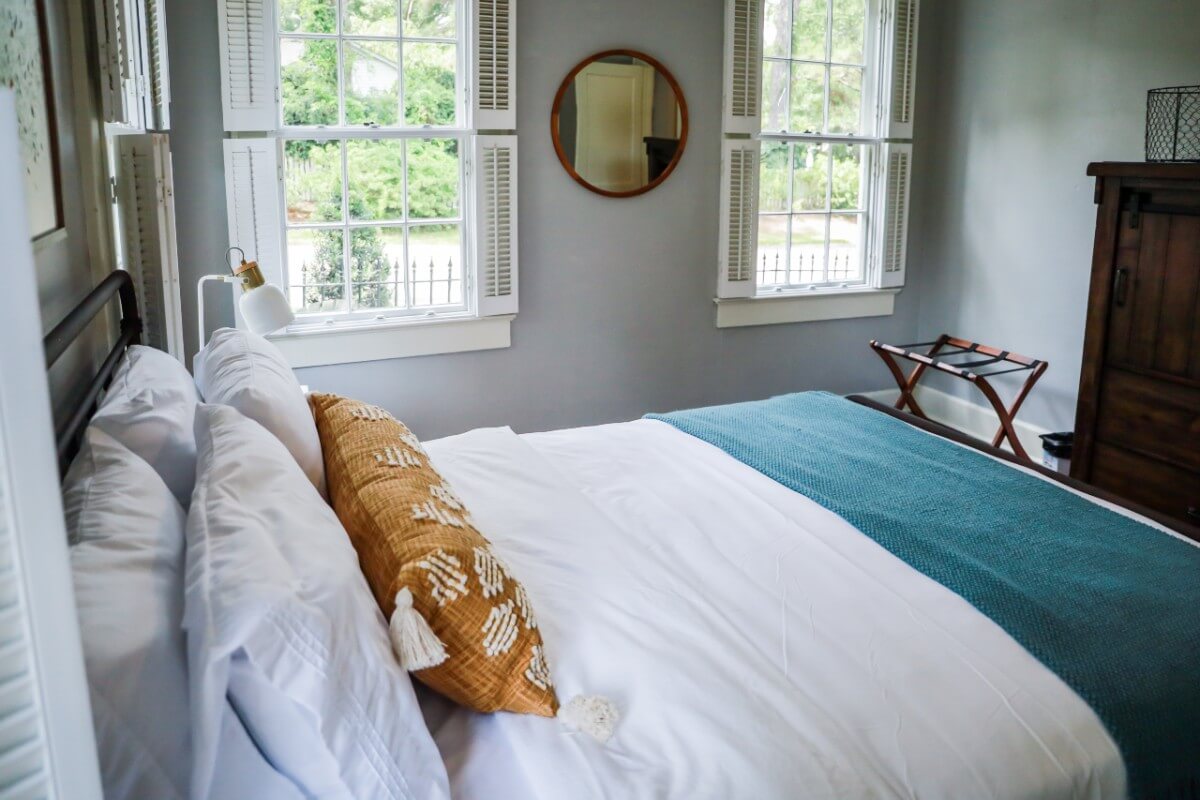8 Minimalism Lessons Learned From Living in a Short Term Rental
In this post: Living in a short-term rental while waiting to move into our new house taught me these (sometimes surprising) lessons about minimalism.
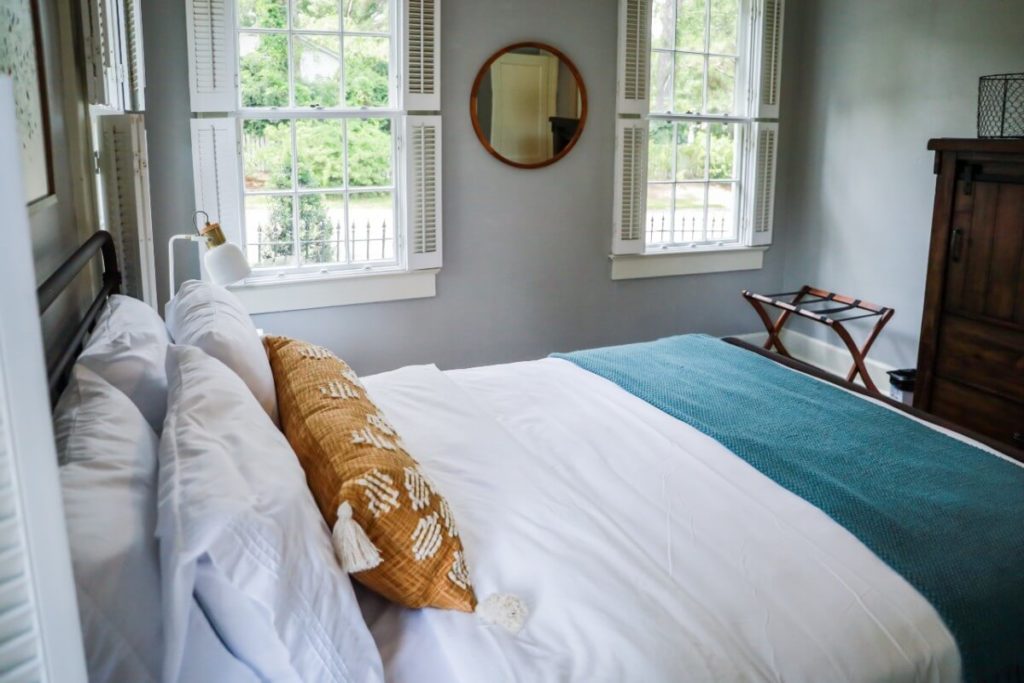
It was in the thick of the pandemic, at the end of a blistering hot summer in Tennessee. We’d just moved all of our stuff out of our first family home and into storage units. Technically, we were homeowners of the new place we’d closed on that morning, but functionally we were between homes and needed a place to stay until the sellers’ temporary lease from us was up.
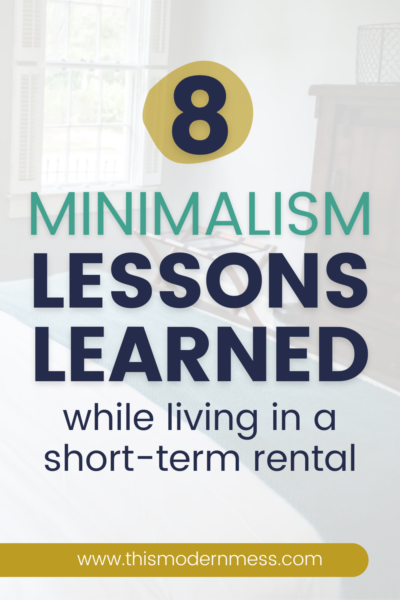
Exhausted from handling all the million details of selling our home, we pulled up to the gate of a short-term rental in Nashville. We were eager to rest and renew in a bubble of isolation, just the three of us, for a couple of weeks until we took possession of our new home.
In many ways, the events of early 2020 had led us to that moment. Stay-at-home orders showed us exactly wanted in a home: specifically, space for our then six-year-old to safely run around outside. Interest rates were low and our home equity had grown, so in June of 2020, we decided it was time to find a new home with more backyard and less traffic.
What happened next was a flurry of preparation, decluttering, staging, packing, and moving. But there we were, looking at the fence that surrounded our temporary home, and sighing with relief that it was … almost … all over.
We’d carefully packed what we thought we’d need for those temporary living arrangement days. Our two cars were crammed with plastic tubs, bags, and suitcases.
Knowing we didn’t want to venture out much at all, to keep the potential risk of disrupting our final move minimal, we’d brought everything but the kitchen sink. From refrigerated foods to pantry staples and entertainment to homeschool curriculum, we had it.
And then, we discovered we’d actually NOT needed most of it. Our little short-term rental apartment already had (almost) everything we DID need.
So, here are the lessons we learned along the way.
May contain affiliate links to items for which I receive a small commission at no extra cost to you. As an Amazon Associate I earn from qualifying purchases. To read my full affiliate disclosure, please click here.
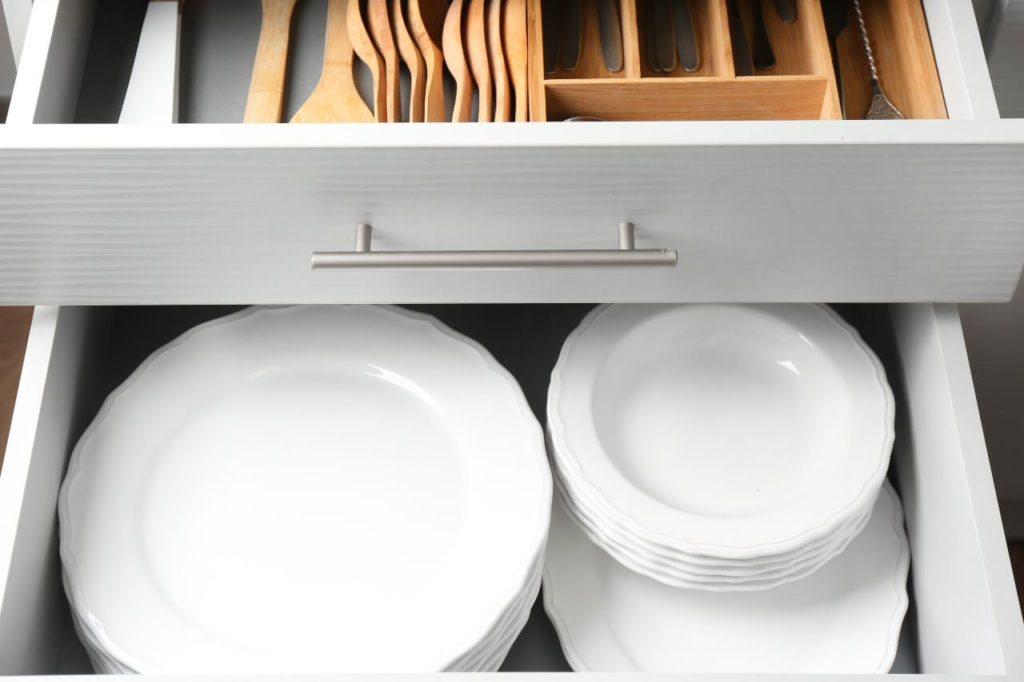
Minimalism Lesson #1: Keep the kitchen simple
Only keep the dishes and tools on hand that you REALLY need to use in everyday life. (Which is surprisingly less than you’d think.)
Store just enough silverware settings for everyone. Maybe two each. Plates, big bowls (for cereal), small bowls (for dips and such), cups, mugs, a couple of pots, a pan, a cookie sheet, a popcorn bowl, mixing bowls, cooking utensils, a can opener, corkscrew, and cutting board. Check.
BUT don’t forget the oven-safe cookware. Oh, man, how I missed my casserole dishes!
Also important: extra trash bags, liquid hand soap, dish soap, dishwasher detergent, laundry detergent, and nice soft towels (something our rental got right.)
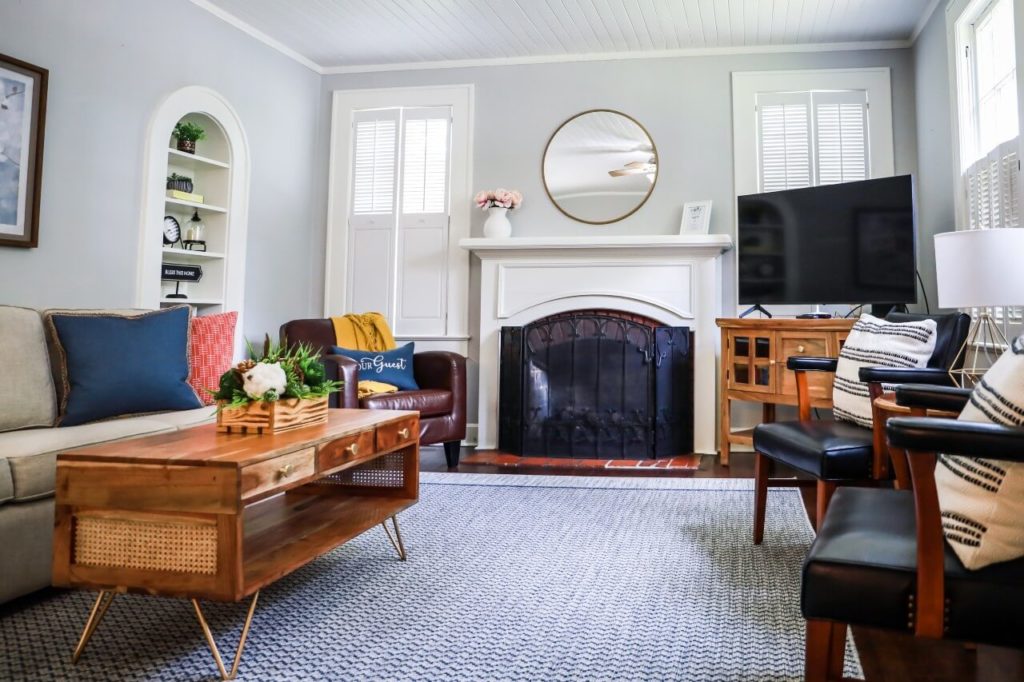
Minimalism Lesson #2: Invest in quality furniture
Invest in furniture that is comfortable, the correct size, and holds up to kids and pets.
Don’t skimp on furniture.
Feeling the wooden framework of an easy chair or couch when you sit or lean on it is uncomfortable. Having a table that barely fits everyone in your family or is uneven on the floor is frustrating. (I’d never missed my dining table more.)
In addition, having furniture that can STORE things hidden away helps relieve the stress of seeing your stuff out everywhere. Stuff that you can’t just get rid of because you actually need it, but isn’t exactly pretty … you know, like toiletries or pantry items.
Also, it is stressful to keep furniture clean and unmarred by little hands or big paws if it isn’t designed to withstand minor scratches and stains. Microfiber is the way to go.

Minimalism Lesson #3: Comfort and convenience are key
If possible, choose a home that is close to the amenities you need to fit your lifestyle to save time AND money.
Just because a house looks adorable on the inside and charming on the outside doesn’t mean it is situated in an area that makes life easier on you.
While I’d love to think that I’m the kind of person who eats at cute little local cafes with her family or cooks gourmet meals from scratch, I’m not. The reality of having a sensory-avoidant picky eater (and, to be honest, being a bit of one, myself), is that lack of familiar, safe foods (and places!) in an easy driving distance is more emotionally and mentally exhausting than one would initially think.
Sometimes, the clutter we need to avoid is not physical. It’s the extra work and stress and exhaustion that comes with being forced to live in a way that is uncomfortable and does not come naturally to you. (Especially if you are neurodivergent.)

Minimalism Lesson #4: A surprising amount of “mess” in our homes is simply paperwork gone wild.
Handle paperwork regularly, if not immediately. Short-term rentals don’t house bills and records and kids artwork like our homes do. And it is a noticeable difference.
It feels less cluttered, just because the paper isn’t there. So if we have a designated place for those inevitable papers, and go through them regularly, it won’t spread as much throughout the house as it would otherwise.
Whenever possible, store paperwork vertically (like in a filing cabinet or system), and vigilantly toss or recycle flyers and other “junk mail” that comes to your home. If you are a couponer or like to order from to-go menus, consider storing them in plastic sheets in a binder that can also stand vertically, to save space.
The bottom line? Vacation rentals feel so much less cluttered because they don’t have all the day-to-day paper clutter. So even just eliminating a few paper piles in your own home, you will automatically minimize the mess.

Minimalism Lesson #5: “Just in case” rarely happens
I don’t know about you, but I keep a lot in my home (or suitcase!) “just in case.” Sometimes, these cases happen. I’ve never regretted bringing a small tube of antibiotic ointment and Band-aids with me on a family vacation, for instance. Scraped knees and boo-boos are inevitable. It helps to be prepared.
But how often do we stockpile resources “just in case” and then actually use them? Probably as often as I needed those full bottles of over-the-counter medicines, or extra clothing and food staples while we waited to move into our new home. Which is, to say, never. They just got in the way and stressed me out.
It is always good to save money if you can, but bulk buying of anything, even essentials (unless you have a larger family who goes through them regularly), only ends up in taking up precious limited storage space.
I’m not talking about being able to shop your own cupboards. Its aves time and money by having enough essentials on hand to replace frequently used products so you don’t have to run an errand just for a new bottle of ketchup, for instance. But I am saying you probably don’t need a case of industrial size olive oil bottles, or a couple dozen bars of soap, unless you are an extreme couponer who donates to charities.
I’m being facetious, but the truth is we often don’t let go of things or buy more than we need because we’re worried about needing them in the future. And we might! But … we might not. The bottom line: don’t let “just in case” take over your “definitely right now” needs such as usable storage and room to live, work, and play.
Although I have to say, if there’s anything we learned from 2020, it’s that it is always helpful to have at least a small backstock of toilet paper in your home. But I’m gonna call that the exception to the rule.
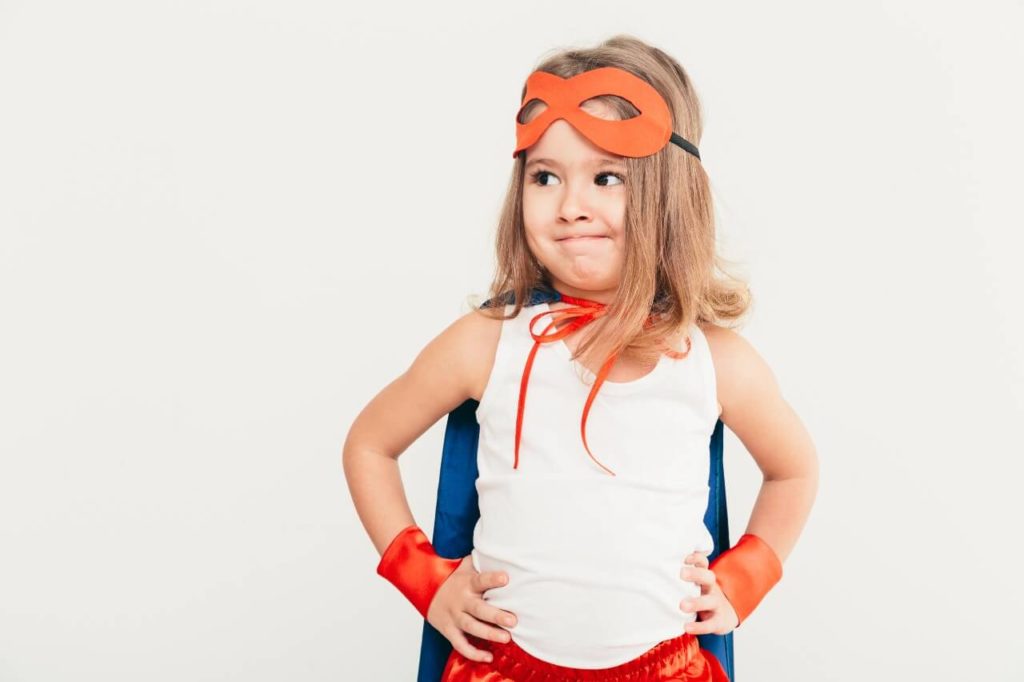
Minimalism Lesson #6: Kids play with way fewer toys than we think
Our son had a backpack worth of toys, books, and games for our nearly two weeks of temporary homelessness while we waited to move into our new home. He barely used them.
Granted, in his case, he is a mini version of my gamer husband, so most of the time he was playing our Nintendo Switch, but when he wasn’t he preferred to play a pretend game with us than sit in his room with Legos or toy cars.
The craziest part about this is I can’t recall him asking for his other toys in the storage unit at all during our stay, and while he complained frequently of being bored, he never lacked for things to do, with only a backpack of toys and books with which to occupy himself.
I’ve seen this phenomenon at work in our bonus room and his bedroom after the move, as well. While he is not a minimalist by any stretch of the word, on any given day I’d guess he interacts with only maybe 10-20% of his belongings, and if I see toys strewn all across the floor, it’s likely only because he has hunted through a bin or bucket for the item he really wanted to use.
Now, I know my son is a gamer and elementary school-aged now, but even as a preschooler, toddler, or baby, he had his favorites. It’s worth keeping an eye on what your kids prefer, as well. If they aren’t ready to let go of the discarded toys yet, you may still be able to pack up the less used ones and create a toy rotation where you bring those out later on when they are fresh and new again.
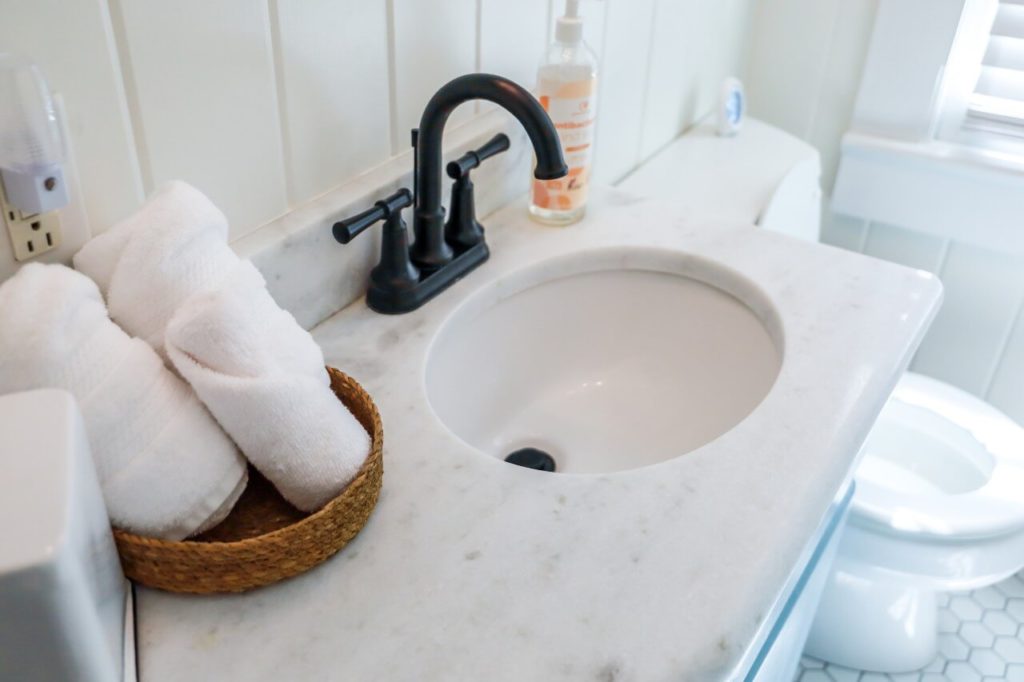
Minimalism Lesson #7: Chaos is stressful
I picked a rental property that was a unit in a row of short-term rentals owned by the same couple. The reason? It was one of the few properties in our area that was fenced in and pet-friendly, and we had a dog.
I thought each unit would be fenced in, like a townhome, but I was wrong. All of the units shared the same yard, and almost all of the other tenants also had picked their unit because they had dogs.
As our dog barks loudly at strangers and is also overly enthusiastic about other canines, it was not a good mix. Every time she had to go out, it felt like a James Bond level amount of sneaking around to make sure there wasn’t a disturbance.
Add to that the (non-pet owner) renters who were just there to party … loudly … in the city, and their 2am drunken yells of enthusiasm to pals, and you had an environment not very well suited to a family who worked and homeschooled during the day and just needed their sleep
Finally, the housing was so small that we were constantly stepping over our belongings.
It was chaos. And it was, honestly, pretty miserable. There is something to be said for a peaceful, clutter-free environment. It is definitely better for your mental and emotional well-being.
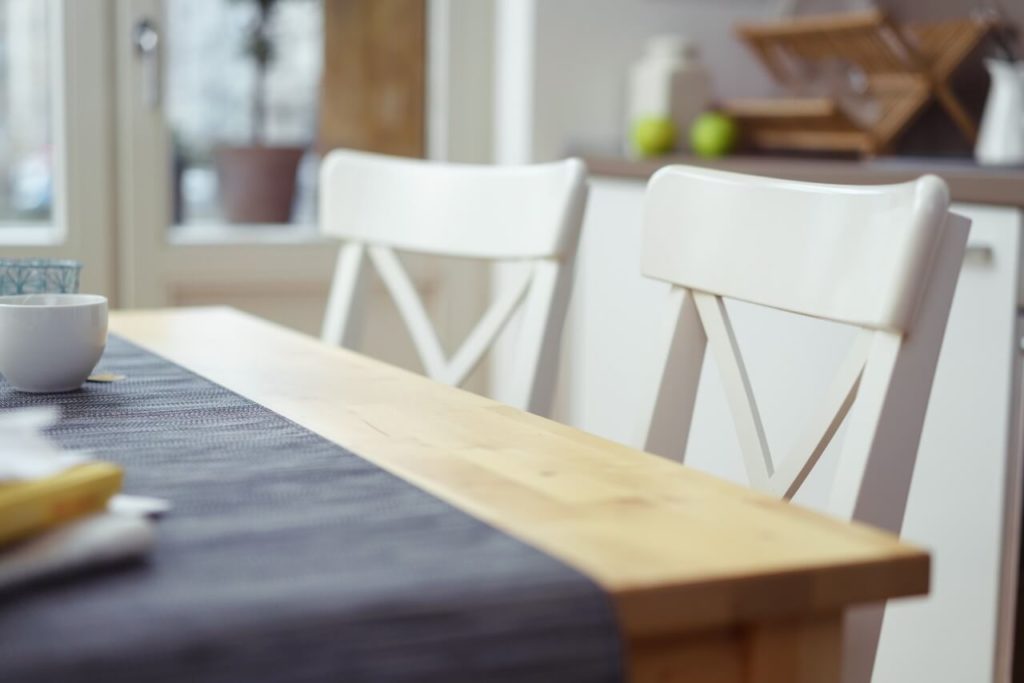
Minimalism Lesson #8: When it comes to decor, less is more
A carefully selected piece of art here. A throw pillow there. A convenient table with USB connections and an electrical outlet right where you need it … intentionally chosen decor for your home goes a long way. Especially if it serves a double-duty like charging your phone.
There’s a reason that short-term rentals feel cozy but not overwhelming (at least not until you fill them with your own stuff)—they are designed with just the essentials in mind. Surfaces are mostly open.
Now, style is subjective. What one person loves, another person finds austere and unapproachable. So “minimalism” does not have to mean all white with Scandanavian or Mid Century Modern touches and a neutral color scheme, as it popular all across Instagram right now.
Rather, pull together elements that go well together, in any style or color scheme, and add a touch of hominess. Don’t crowd every surface and display with knick-knacks, and your home will automatically feel cozier and less chaotic. (Unless “cottagecore” or maximalism is your thing and brings you peace, then go wild!)
Many short term rentals carry a simple color scheme throughout the home, featuring just a few main colors. This makes it easier to accessorize and mix-and-match. That is the minimalism lesson to glean from this.
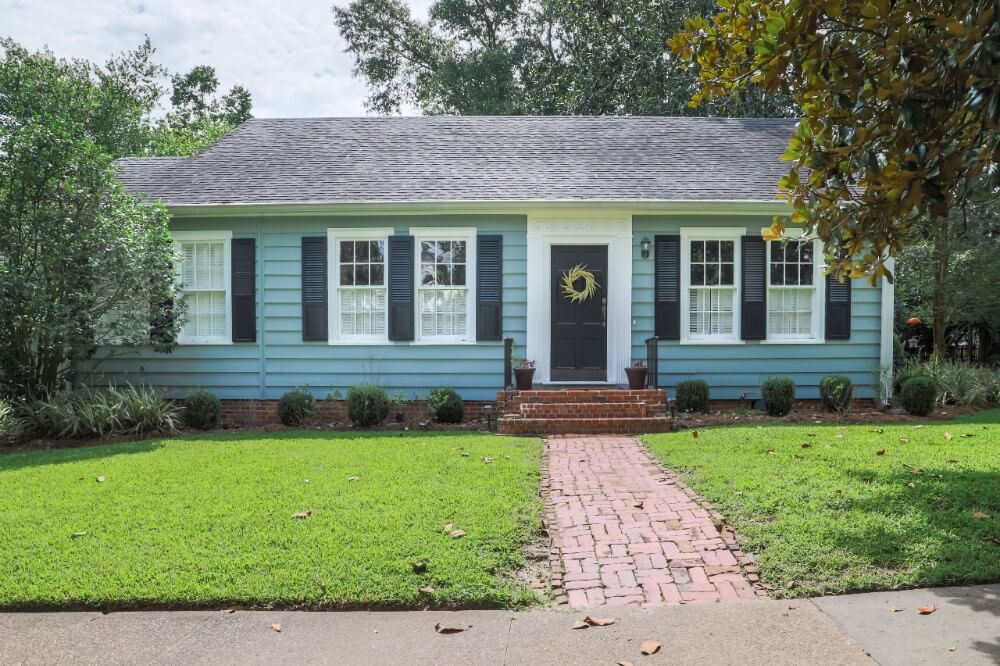
Parting thoughts on living in a short term rental during a move
We learned these minimalism lessons because we were forced to find temporary housing during a move. We closed on both our former and new homes in the same day, but our sellers needed extra time to vacate the property due to some extenuating circumstances beyond their control.
Due to the pandemic, we had two options: get a weekly rate at an extended stay hotel with a full kitchen, or rent an AirBnB or Vrbo home. The extended stay hotels in our area did not allow pets over a certain size and weight, and our standard poodle, sadly, fell outside those ranges. (Not to mention she would be a lot happier with room to run and play.) So we chose to book a pet-friendly AirBnB, instead.
I won’t lie: if you find yourself in a similar situation, it isn’t ideal. We were beyond ready to move into our new home after just a week of living this way. But it is doable if you stay focused on keeping a positive attitude despite the challenges.
That being said, we learned that we could live without a lot of items we previously thought were necessary. So if you are looking to pare down your possessions to just the essentials, and want to know what that looks like, evaluate the kitchen and other rooms of your next vacation rental. Owners know what guests need to make their vacation comfortable.
Everything else? Just the whipped cream on top.
You Might Also Like:
- The Ultimate Guide to Declutter Toys: The Meltdown-Free Method You Need to Try Now
- Letting go when decluttering hurts (It’s okay to grieve)
- How To Declutter Your Attic (Without Losing Your Mind)
- This step-by-step decluttering book helps you ditch clutter in 90 days
- How to Change Your Mindset and Declutter Your Home at Last (Part 2)
- How to Change Your Mindset and Declutter Your Home at Last (Part 1)
- Declutter your holiday with this free 12-Day challenge
- How to Declutter for Christmas (and Save Time and Money)

